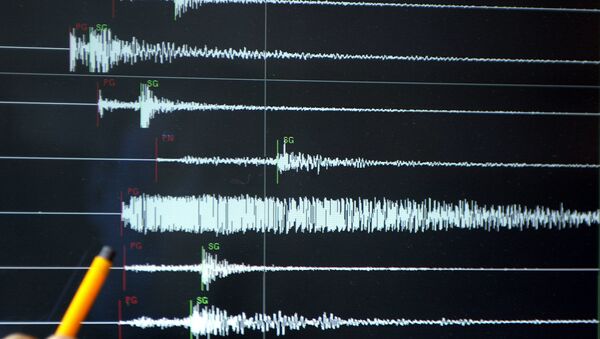A group of scientists led by Deepa Mele Veedu, an Indian-origin researcher from the Earth Observatory of Singapore (EOS) at Nanyang Technological University (NTU) has discovered a way to predict earthquakes. In the study scientists reveal that slow fault movements, or small vibrations caused by moving sub-layers of the Earth, not only potentially point to an coming earthquake; there is also a distinguishable pattern to them.
The findings are different from what scientists have thought so far. It's generally believed that larger earthquakes are unlikely to happen following tremors or small-scale earthquakes that are caused by small vibrations.
"This discovery defied our understanding of how the Earth faults accumulate and release stress over time. These vibration patterns are caused by alternating slow and fast ruptures occurring on the same patch of a fault," said Sylvain Barbot, assistant professor from NTU's Asian School of the Environment and earth scientist at EOS.
"If only slow movements are detected, it does not mean that a large earthquake cannot happen there. On the contrary, the same area of the fault can rupture in a catastrophic earthquake," Barbot added.
Finding fault: In their latest groundbreaking study, #NTUsg earth scientists have debunked the view that rumbling fault lines do not spell trouble. http://bit.ly/NTUEOSstudy
Posted by Nanyang Technological University, Singapore on Tuesday, 5 April 2016
According to NTU, the study has major significance on the prediction of earthquakes and will help to forecast large earthquakes in the region.
Compared with other regions on the earth, Southeast Asia's risk of natural hazards is very high due to its closeness to seismically active faults, active volcanic zones and tsunami-prone coasts, along with sensitivity to the effects of extreme weathers and climate change. Southeast Asia has had 4,375 earthquakes in the past year, according to researches.
Congratulations @deepameleveedu on your 1st ever #ChannelNewsAsia TV interview! #EOS_SG #earthquake pic.twitter.com/yZ3bOiTz9P
— Shireen Federico (@shireenfederico) 11 апреля 2016 г.




